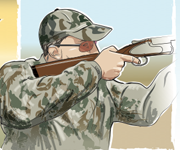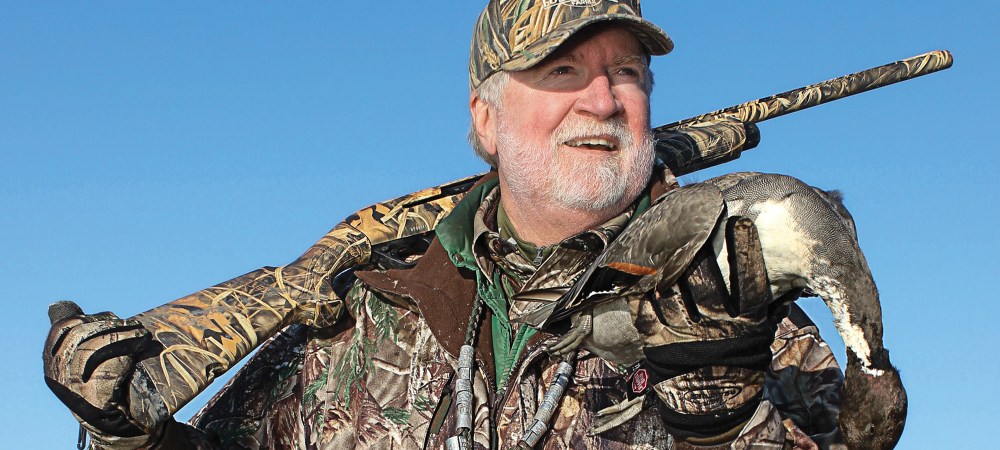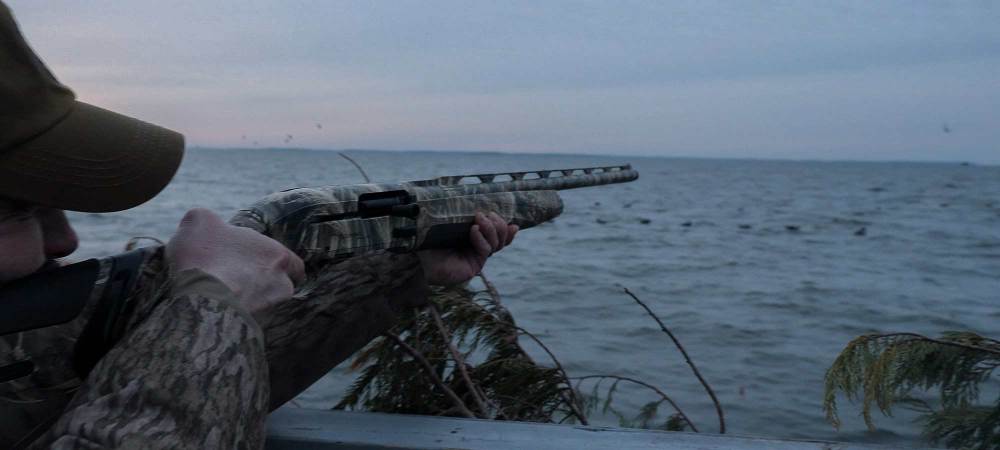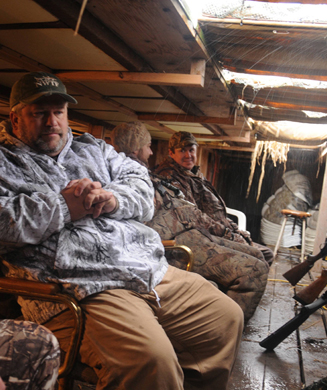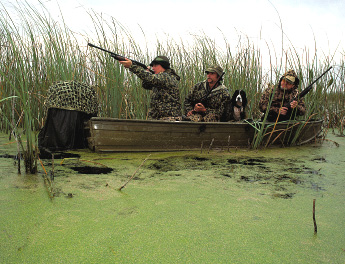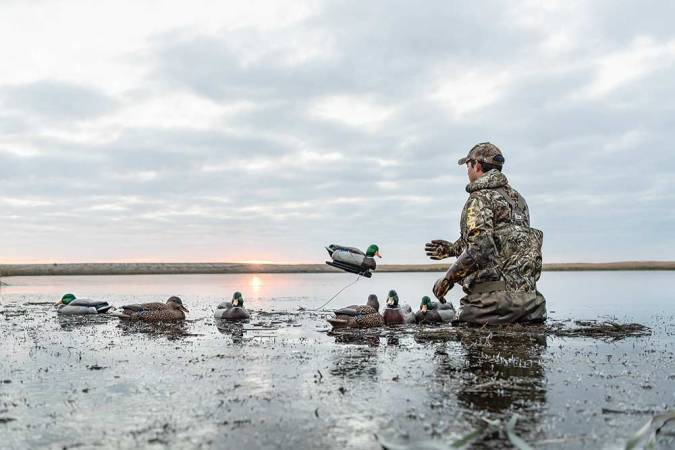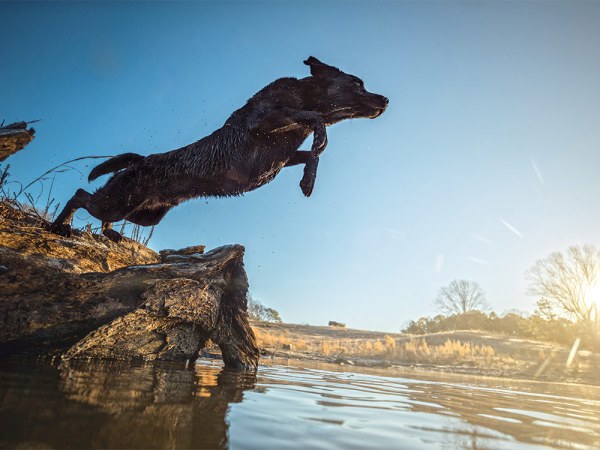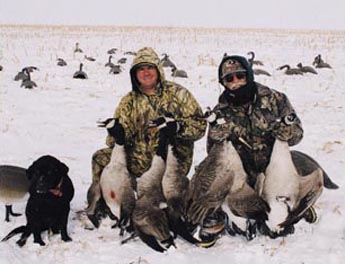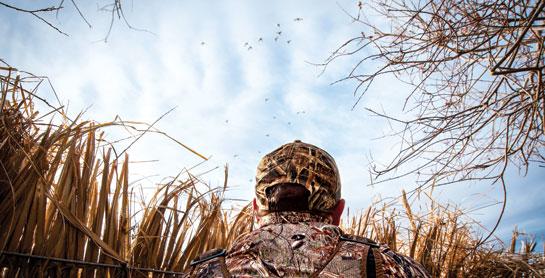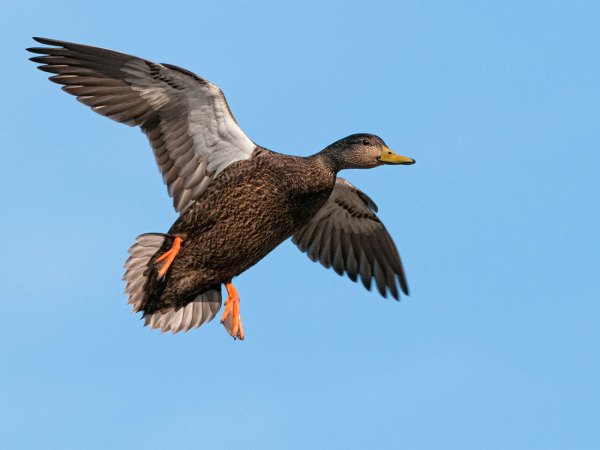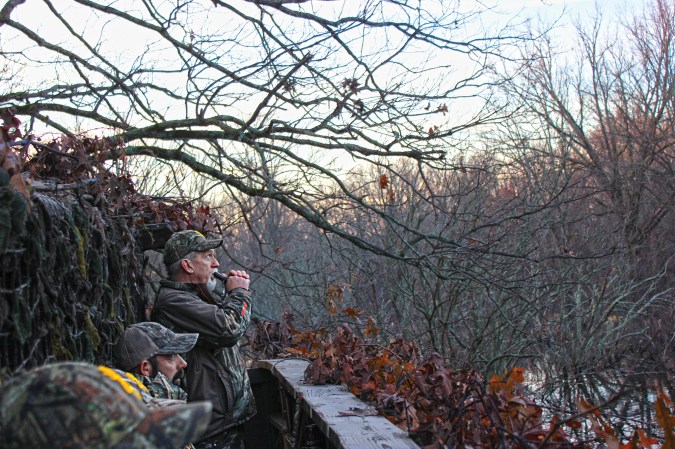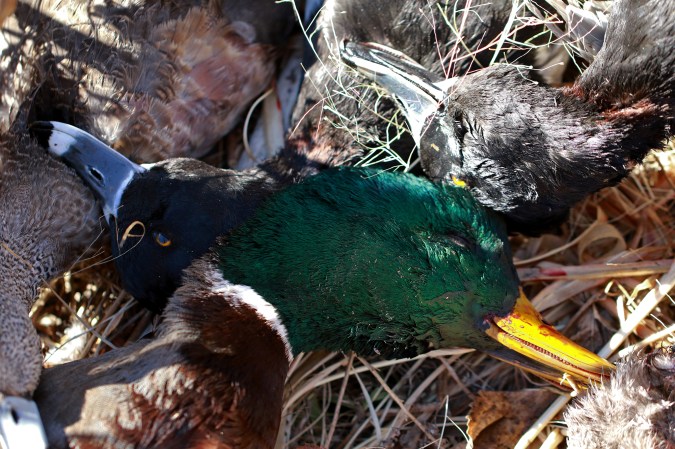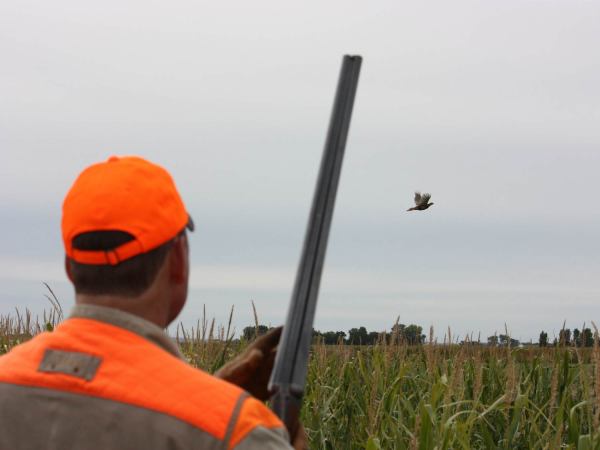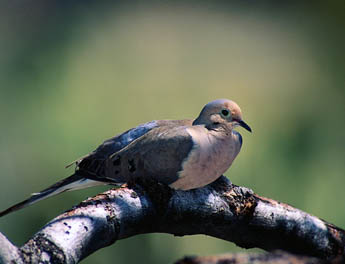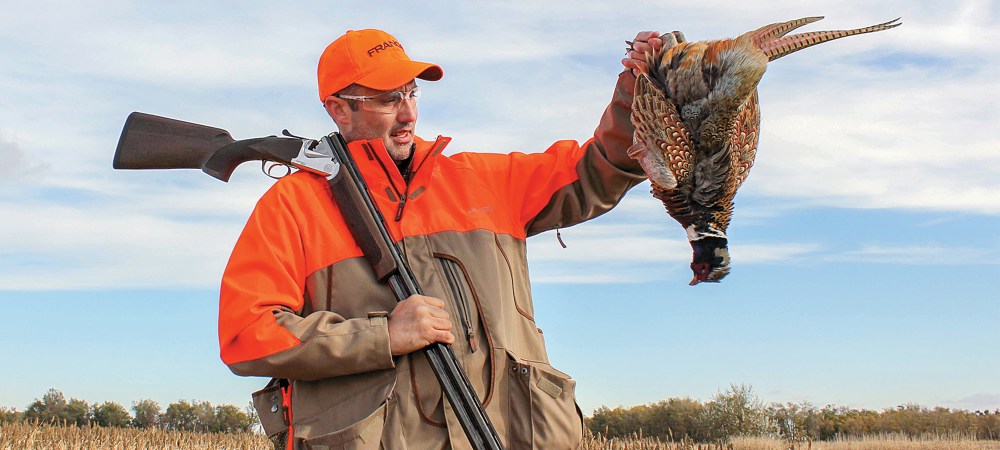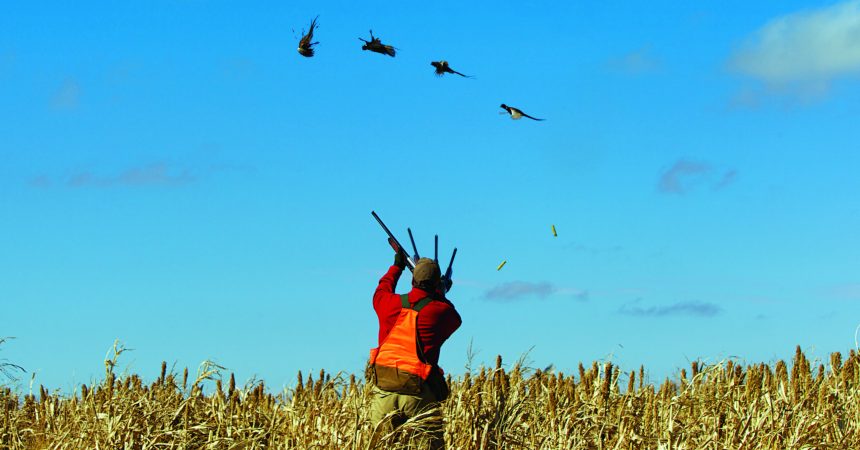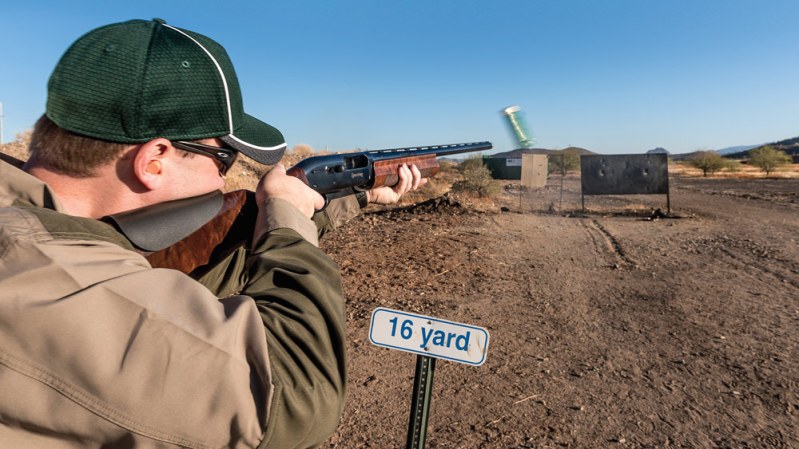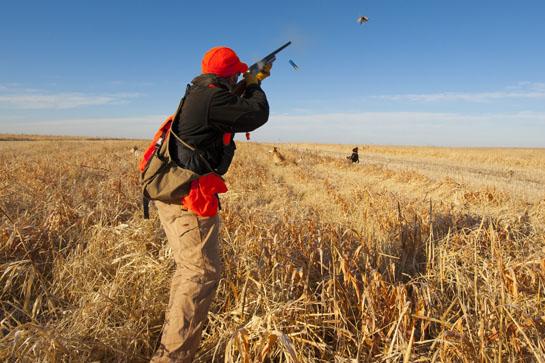We may earn revenue from the products available on this page and participate in affiliate programs. Learn More ›
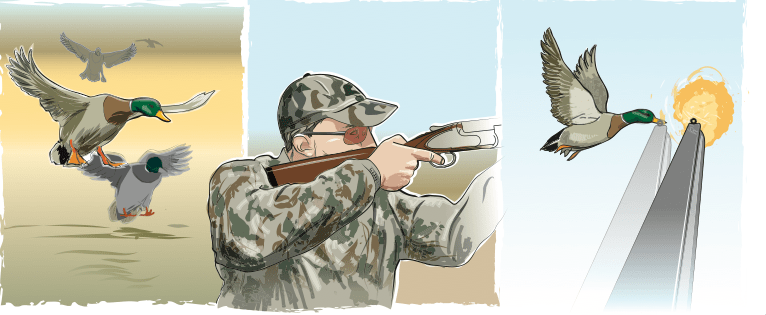
Waterfowl hunting presents a number of difficult shooting situations: Your feet are mired in mud, trees are in the way, the blind is too high — there are dozens of problems. However, if you have a good gun mount in your muscle memory and a plan for how you’re going to shoot when the moment comes, you’re way ahead of the game.
For starters, learn to call with one hand so the other hand can be on the gun. In flooded timber it’s a necessity, but it’s usually neglected in the blind. Here are some more specific tips to make you a top shot in the blind.
1. Focus on one bird
When I guided on Maryland’s Eastern Shore, I always told my hunters that when a flock of birds comes into the decoys, they should pick one single bird and shoot only at that duck or goose until it drops or the gun is empty. All too often hunters see a flock of birds in front of them and fire wildly into the flock. You’d think a shotgun’s 30-inch pattern would hit something, but it almost never happens.
As the birds make their final swing, while staying hidden, try to pick one bird, and when you come up to shoot, pour it on him. If someone shoots your bird before you do, zero in with laser-like vision on another. Concentrate solely on that bird, as if it were the only duck or goose in the sky. If it drops, find another.
In all shotgun shooting, concentration on the individual bird is the most important factor in success.
2. Perfect your mount
It is impossible to shoot well without a good gun mount that puts your eye over the rib. Committed to muscle memory, a good gun mount will have you on the bird without any conscious thought, and when the mount isn’t perfect, muscle memory will take over.
Practice mounting your gun daily. Insert a AA Mini Maglite in the muzzle of an empty gun, and practice mounting the gun with the light shining in the upper corner of a room. Then practice mounting as you swing along the ceiling-wall seam. Ten reps going right to left and left to right will have you mounting perfectly in a couple of weeks.
The eye is the shotgun’s rear sight, and if it’s off, the shot will go astray. When you get into bad situations with your feet stuck in mud and at other awkward times, a consistent gun mount will put birds in the bag.
3. Lead made easy
Campfire talk always comes around to lead. With today’s ultra-fast ammo, 20-yard birds in the decoys need no lead; longer targets do. Skeet teaches specific leads, but lead always varies with game birds. There are two types of targets — crossing and going away. The tighter the angle, the less lead you need.
For bird shooting, the best possible lead system is pull away. Here the gun is brought to the target and tracks it for an instant, which gives you the speed of the bird and its direction. If a bird is tracked for 10 feet, unless it flares, the brain will know where it will be by the time you shoot. Then the gun is simply pulled away, creating a space between the bird and gun, and you shoot as the gun continues in a good follow-through.
Concentration is solely on the bird, with the barrel in the peripheral vision.
